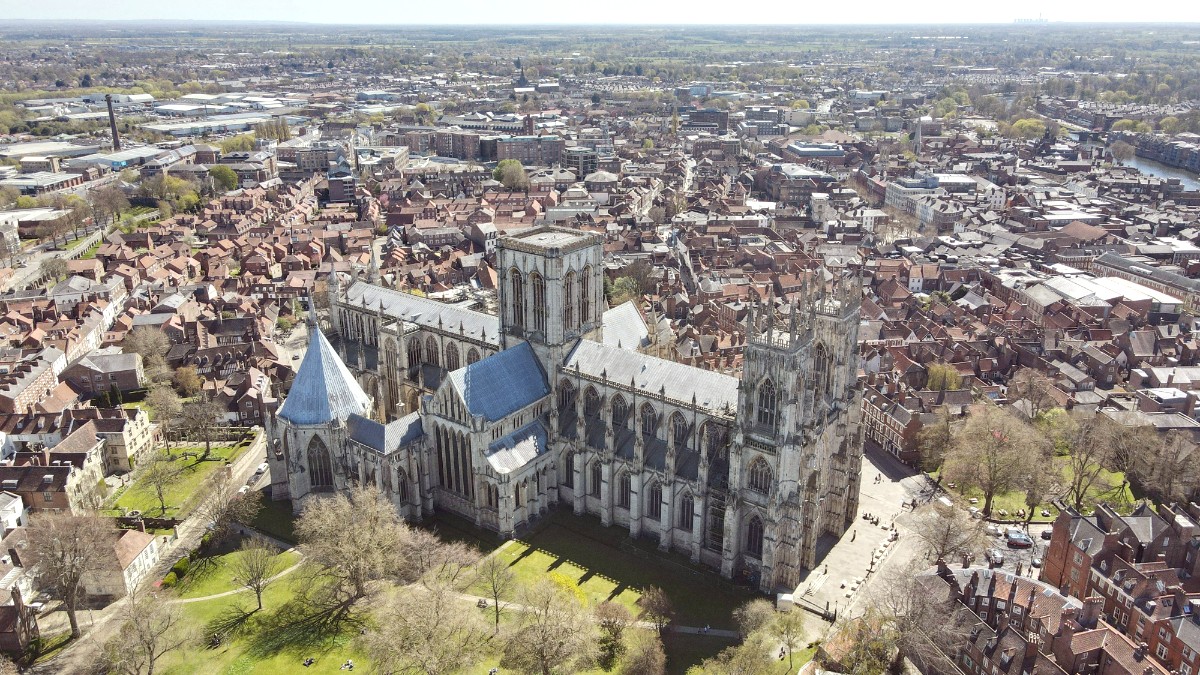
Yorkshire, England
This city, with its ancient walls and a river flowing through its heart, invites you to uncover its many layers. Get ready to experience a place where every stone tells a tale. Your journey into England's history begins here.
York sits in the county of Yorkshire, a large and varied region in northern England. The city positions itself at the confluence of the River Ouse and the River Foss. This strategic location, on relatively flat land, contributed to its historical importance as a trading and administrative hub. While the city itself is low-lying, the broader Yorkshire region has diverse landscapes.
To the east, the flat Vale of York transitions towards the coastal plains. Westward, the terrain rises towards the Yorkshire Dales, a national park known for its rolling hills and valleys. To the north, the North York Moors National Park gives vast expanses of heather moorland. York’s inland position means it avoids direct coastal weather, but its river location calls for attention to flood warnings during heavy rainfall, especially in winter. The city has good road and rail links, connecting it easily to major UK cities like London, Manchester, and Edinburgh, as well as to regional airports. This central location within Yorkshire makes York a practical base for exploring the wider county, with access to both rural landscapes and other towns.
York boasts a history spanning over 2,000 years, establishing itself as one of England’s most historically rich cities. Its story begins with the Romans, who established Eboracum in 71 AD as a fortress and a provincial capital. Two Roman emperors, Septimius Severus and Constantius I, died here, underlining its early importance. Evidence of Roman occupation is visible in structures like the Multangular Tower in the Museum Gardens.
Following Roman withdrawal, the Anglo-Saxons took control, renaming the settlement Eoforwic. It became a significant Anglo-Saxon kingdom. In 866 AD, Viking invaders captured the city, renaming it Jorvik. Under Viking rule, Jorvik became a major trading port and a power center in northern England. The Jorvik Viking Centre, built on an archaeological dig site, gives an immersive experience of this period.
Founded 71 AD, provincial capital and military stronghold.
Significant kingdom after Roman departure.
Captured 866 AD, major trading port.
William the Conqueror built castles, securing control.
Second only to London in importance, wealth built York Minster.
After the Norman Conquest in 1066, William the Conqueror built two castles in York, cementing Norman control. The city then flourished as a medieval wool trading center, second only to London in importance. This wealth appears in the construction of York Minster, a Gothic masterpiece that took centuries to build, and the well-preserved medieval City Walls.
In later centuries, York remained a regional capital. The city played a role in the English Civil War and later became a railway hub during the Industrial Revolution, celebrated today at the National Railway Museum.
This layered history, with remnants from each era, gives visitors an unique opportunity to trace England’s development through its buildings, streets, and museums.
York’s historical layers appear in its architecture and museums.
York, a historic city in North Yorkshire, England, has a compelling blend of ancient and modern. Its well-preserved medieval city walls encircle a compact, walkable core, making exploration of its many attractions easy for visitors.
York Minster is a grand Gothic cathedral, one of Europe's largest, known for its stained glass and architectural detail.
The walkable medieval city walls give panoramic city views.
The Shambles is a narrow, historic street with overhanging timber-framed buildings.
York appeals to history enthusiasts, culture lovers, families, and those seeking a charming, walkable city break. Its atmosphere welcomes visitors wanting to explore traditional English heritage.
What to Expect: Temperate climate with four distinct seasons. Be ready for rain at any time of year. Food: Traditional British fare, including Yorkshire pudding, fish and chips, and hearty pub meals. The city has diverse dining options. Transport: The city center is best explored on foot. A good local bus network and Park & Ride services are available. Vibe: A bustling, friendly city with a strong sense of its past. It combines historical charm with a modern, lively atmosphere.